2025 Honda CR-V Review: Well-rounded SUV carries over, still on top

Pros: High-quality and great-looking interior; excellent hybrid; strong safety credentials; refined and responsive driving experience
Cons: No plug-in hybrid or off-road models; hybrid doesn’t have a spare tire or fold-flat back seats; simple base touchscreen
The 2025 Honda CR-V sees no changes, and although a few competitors are getting updated or overhauled (Hyundai Tucson, Subaru Forester), we feel safe in continuing to declare it our top compact SUV choice. Now, the base turbo engine version isn’t quite as strong when put up alongside other gas-only rivals, but the hybrid models (if it has Sport in its name, it’s a hybrid) are so excellent and command only a small price premium, the entire model line still gets our nod.
Why? Quite simply, the Honda CR-V does everything well. It checks off all the boxes expected of sensible family transport: spacious for people and their stuff, strong safety credentials, fuel efficient, well-equipped, well-built, and likely to be reliable and hold its value. Unlike past CR-V generations, though, it does all that while looking good, especially inside. It’s also one of the more enjoyable compact SUVs to drive.
Of course, just because the CR-V is our top choice, doesn’t mean we don’t think it’s worth checking out the deep field of very good competitors. That includes the hybrid versions of the Kia Sportage, Hyundai Tucson and Toyota RAV4, plus the Mazda CX-50, Volkswagen Tiguan and revised Subaru Forester.
Interior & Technology | Passenger & Cargo Space | Performance & Fuel Economy
What it’s like to drive | Pricing & Trim Levels | Crash Ratings & Safety Features
What’s new for 2025?
The CR-V carries over unchanged for 2025, though the price does inch up by a couple hundred bucks, which is normal.
What are the CR-V interior and in-car technology like?
Some may prefer the showier cabins of certain competitors (two of our editors did in our CR-V vs Sportage comparison test), but the clean, sophisticated look of the CR-V interior is pure, classic Honda. There’s something about the blend of metal honeycomb vents, piano black and chrome knobs that evoke a really cool Fender amp. The design and styling should be timeless.
Importantly, though, it remains well made and extremely functional. There’s ample storage space and cupholders. The dash is low, and in conjunction with the front pillars, visibility is excellent and there’s a strong sense of spaciousness. All the switchgear feels high-quality with tight, solid action whether it’s a turn signal stalk or the highly welcome climate control dials. There’s even a conventional shifter instead of some confusing, different-for-different-sake electronic doo-dad.
As for instruments and infotainment, the CR-V features an analog speedometer combined with a 7-inch screen that can display the tachometer and other information. The standard infotainment display is a 7-inch touchscreen (below left) with volume and tuning knobs and a couple of physical menu buttons. It’s awfully rudimentary in terms of appearance and capability, but if you’re mostly going to use the standard Apple CarPlay and Android Auto, that may not matter. The EX-L, Sport-L and Sport Touring get a 9-inch touchscreen with configurable touch-operated menu shortcut buttons that stay docked on the screen. It has far more capability and features, looks modern enough, and responds with sufficient speed to inputs. It’s fully competitive with most rivals, though we still prefer the Hyundai/Kia systems.
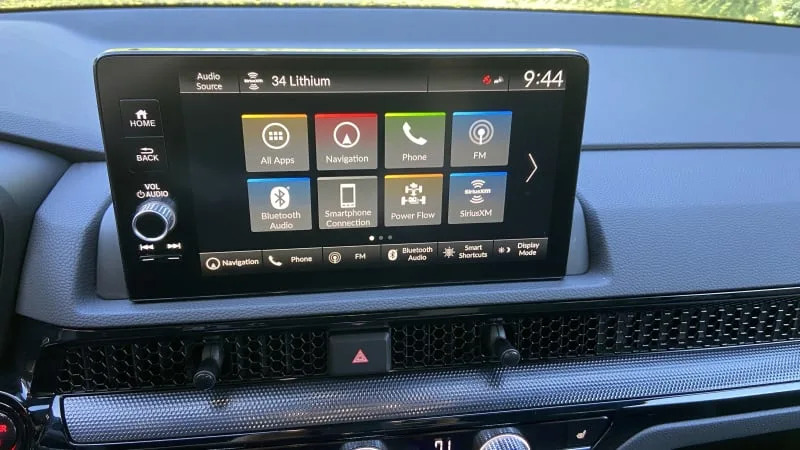
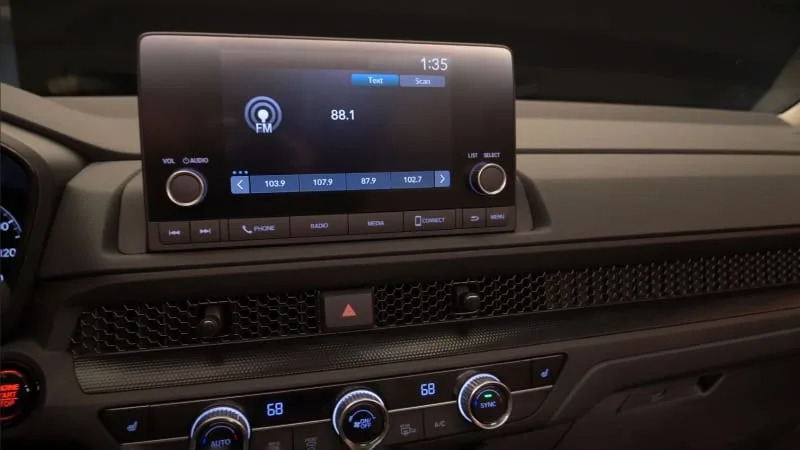
How big is the CR-V?
If you’re coming from the previous generation, this CR-V is a bit bigger than before, but you’re unlikely to notice much of a difference inside. It continues to be one of the biggest and most passenger-friendly compact SUVs. The back seat is very spacious for those of long leg and for rear-facing child seats. It also reclines to a great degree, increasing comfort. Front seat adjustability and comfort are excellent.
Cargo space differs based on trim level. The EX and EX-L have a dual-level cargo floor, which frees up some extra space while still maintaining a fully flat load floor when you lower the back seat. The base LX and all the hybrid-powered Sport trims lack this, meaning they have a bit less space (3 cubic-feet to be precise) and a step in the middle of the floor when you lower the back seat. The hybrids also lack a spare tire, unlike the RAV4 and Sportage hybrids. In our cargo test of a hybrid-powered CR-V, we managed to fit our standard selection of six suitcases plus a 38-quart cooler, two smaller coolers and a kid-carrying hiking backpack. This is a lot of stuff for a five-passenger vehicle, but not quite as good as the Sportage, Tucson and RAV4. (All preceding links go their respective cargo tests).
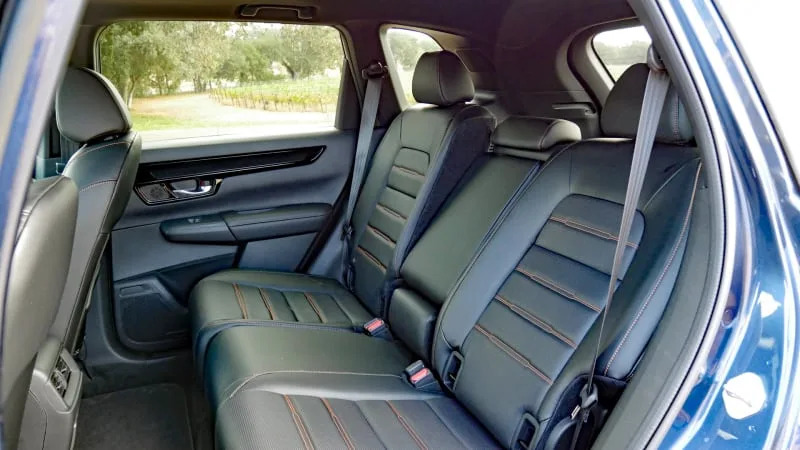

What are the CR-V fuel economy and performance specs?
The CR-V LX, EX and EX-L are powered by a 1.5-liter turbocharged inline-four that produces 190 horsepower and 179 pound-feet of torque. Power goes through a continuously variable transmission and on to either just the front wheels or all four with the optional all-wheel drive. Fuel economy estimates are 28 mpg city, 34 mpg highway and 30 mpg combined with FWD, and 27/32/29 with AWD.
Every trim level with the word “Sport” in its name has a hybrid powertrain. It uses a naturally aspirated 2.0-liter four-cylinder and a pair of electric motors. Under most circumstances, it operates as a series hybrid with the gas engine producing electricity and the larger of the two motors turning the wheels. There are some situations where the gas engine can provide drive power directly, such as steady-state highway cruising. Combined power is 204 horsepower and 247 pound-feet of torque. Front- and all-wheel drive are available, with the Sport Touring being AWD-only. Fuel economy stands at 43 mpg city, 36 mpg highway and 40 mpg combined with FWD, and 40/34/37 with AWD.
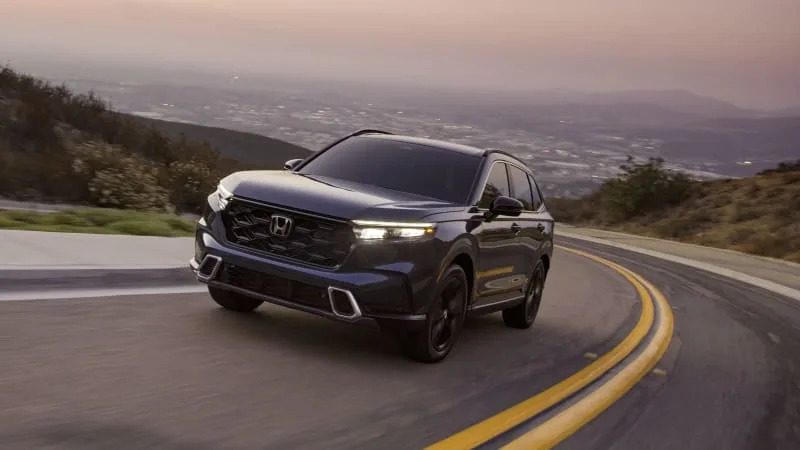
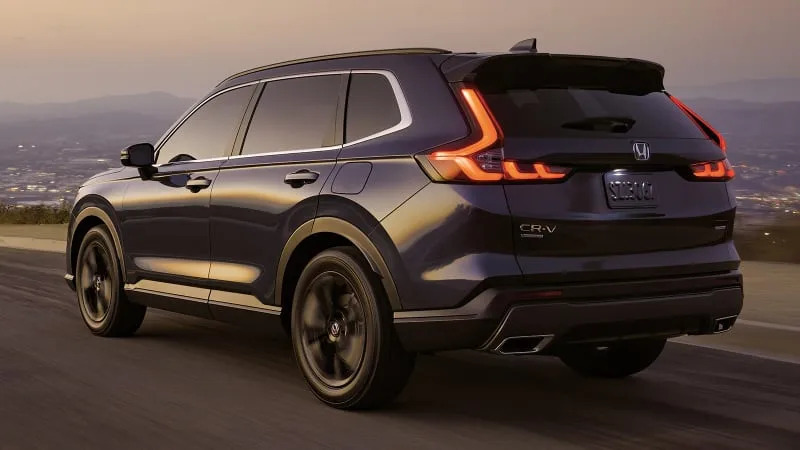
What’s the CR-V like to drive?
Honda has recaptured some of its old driving dynamics mojo with this latest CR-V generation, now in its third model year. It is once again one of the more engaging compact SUVs to drive, although that’s not exactly a high bar, and it does depend on which powertrain you get. Perhaps surprisingly, the better performer is the hybrid. The base turbo engine is smooth, but can be noisy, in part due to its CVT that still has some rubber-band characteristics and also makes the powertrain feel somewhat unresponsive. Power is perfectly adequate, but not inspiring. The hybrid, meanwhile, is not only more powerful, but by powering the wheels almost exclusively with its electric motor (the engine is mostly just there to generate electricity), it provides the sort of smooth, effortless power off the line normally associated with EVs. The powertrain also simulates shifts when accelerating, making it sound and feel a lot more normal than other hybrids like the Toyota RAV4 and the CVT-equipped base turbo engine.
In terms of ride and handling, the CR-V is one of the most refined vehicles in the segment, with notably controlled body motions and a comfy ride we can’t imagine anyone objecting to. The steering is also very precise with nice, consistent weighting that allows you to feel more connected to the road. Overall, we preferred driving the CR-V over another favorite of ours, the Kia Sportage Hybrid, but those seeking a sportier feel will still prefer a Mazda CX-5 or CX-50.
What other Honda CR-V reviews can I read?
Honda CR-V vs Kia Sportage Hybrid Comparison Test
A complete comparison between our two top choices in the compact SUV segment. They’re both hybrids.
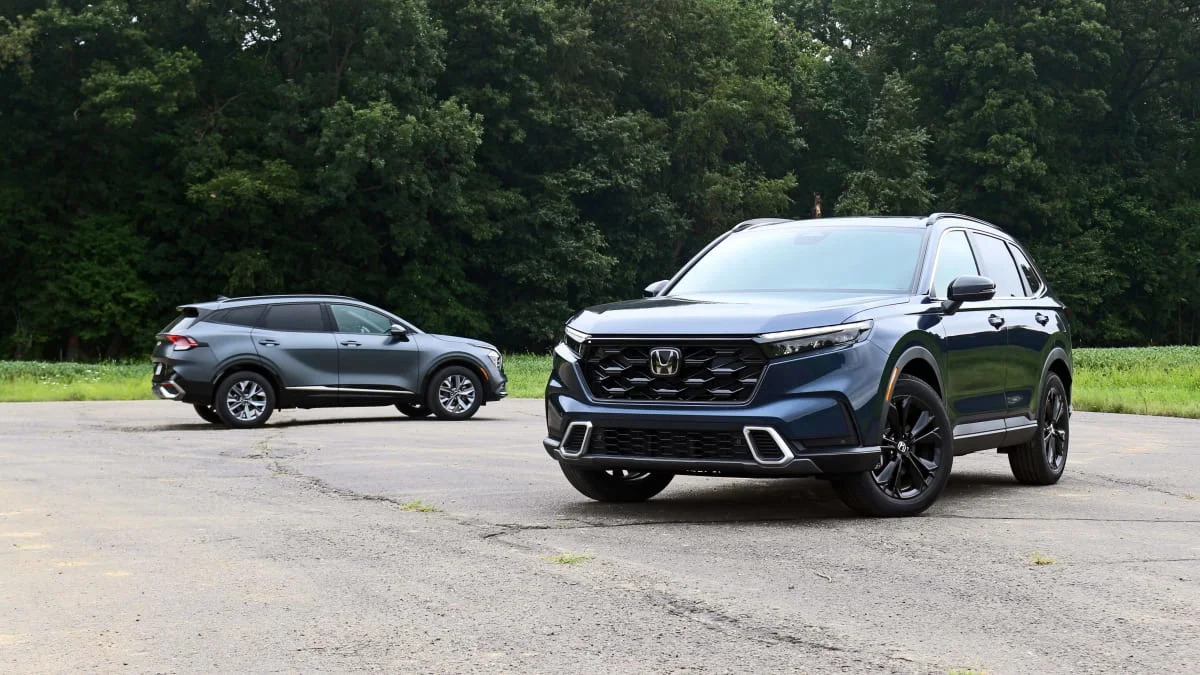
Honda CR-V Luggage Test
We put the CR-V’s 36.3 cubic-feet of cargo space to the test with actual suitcases (and a cooler since the space is so darn big).
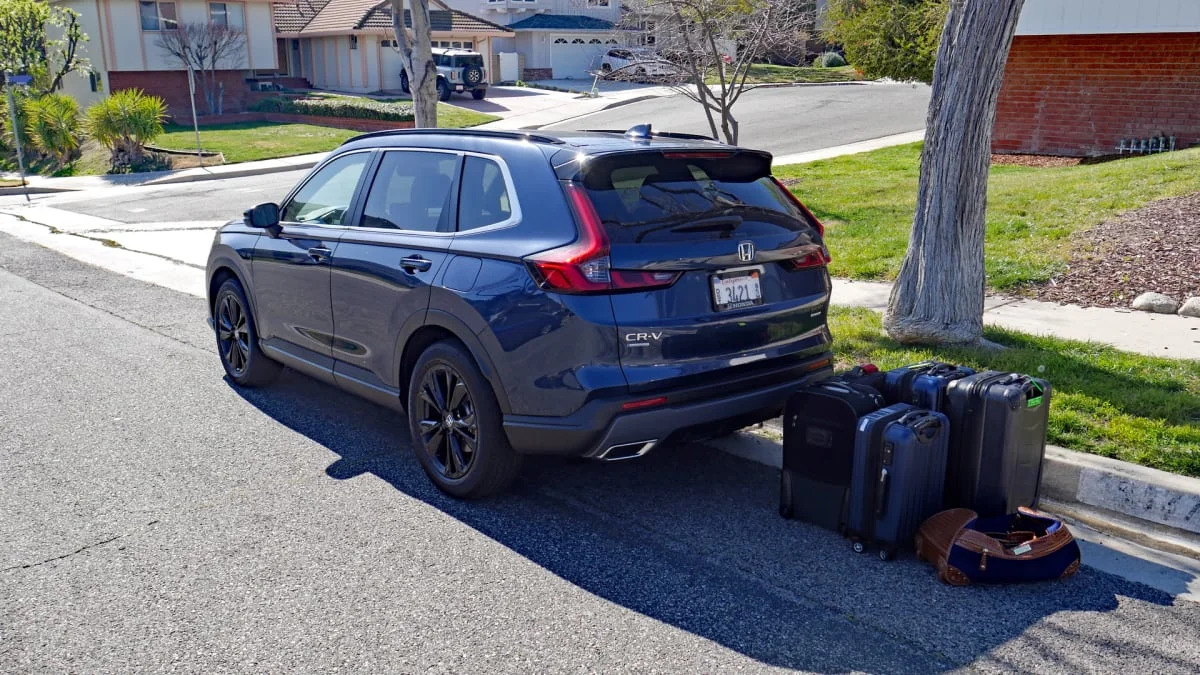
Honda CR-V Sport Touring Interior Review
A deep dive into the clean, classy and high-quality interior of the range-topping CR-V.
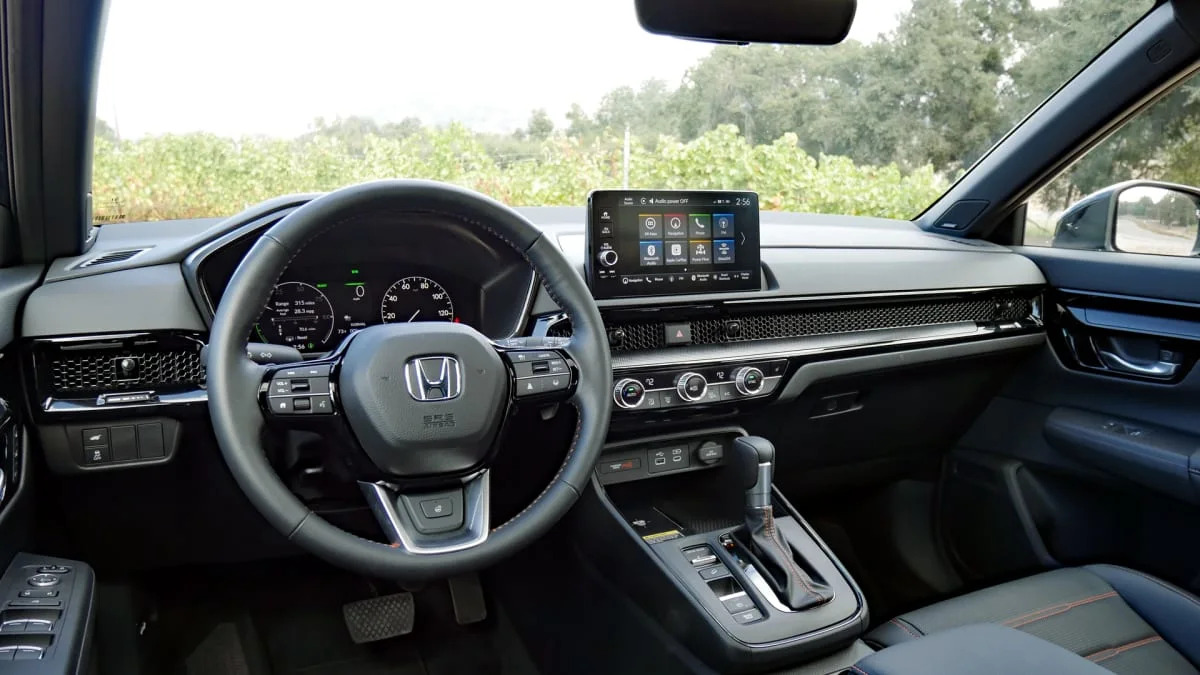
2023 Honda CR-V Hybrid First Drive Review
Our most comprehensive look at the new CR-V, with driving impressions of the hybrid along with comparisons to the turbo engine and previous generation. We also dive deeper into its design and engineering.
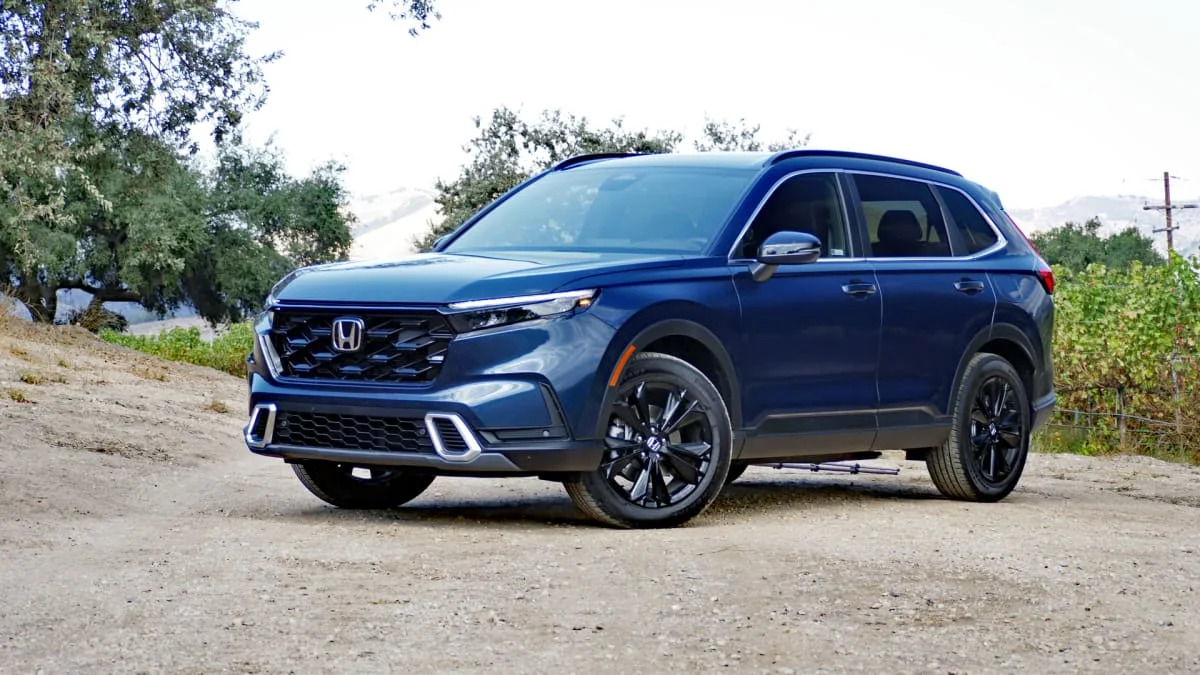
2023 Honda CR-V Turbo Engine First Drive Review: Bigger, better, pricier
Our closest look at those CR-V trim levels with the gas-only turbo engine.
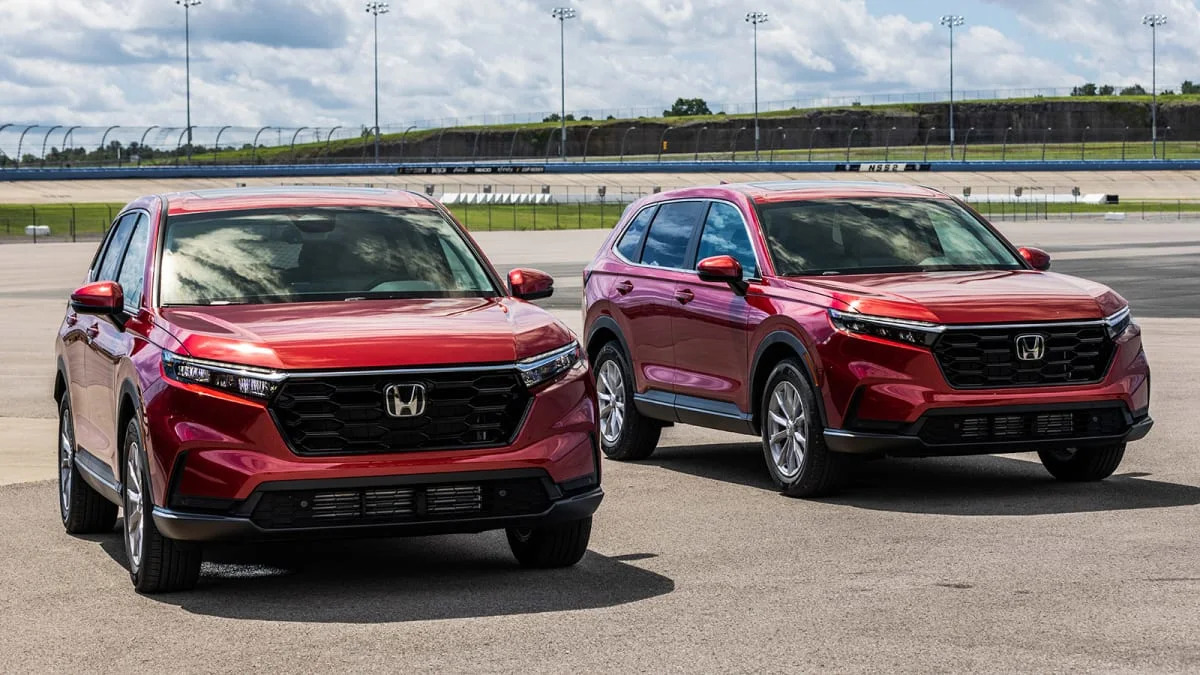
What is the 2025 CR-V price and where is it built?
The Honda CR-V is built in three factories in Ohio, Indiana and Ontario. Pricing starts at $31,450, including the $1,350 destination charge. Although we don’t have pricing for rival SUVs at the time of this writing, it had a pricier point of entry last year and we doubt that’ll change for 2025.
Once again, it’s important to note the CR-V’s unique trim level structure. The traditional Honda trim levels of LX, EX and EX-L come only with the base turbo engine, and vice versa. The Sport, Sport-L and Sport Touring are hybrid only, and vice versa.
Overall, we would strongly recommend opting for the hybrids, even if the relatively modest price premium still doesn’t make sense given the amount of gas you’ll save. The hybrid is more powerful, the Sport trims are better to drive, and for what it’s worth, we think they look better, too. We would also anticipate them holding their value better.
All prices below include the $1,350 destination charge.
LX: $31,450
LX AWD: $32,950
EX: $33,700
EX AWD: $35,200
EX-L: $36,350
EX-L AWD: $37,850
Sport: $35,700
Sport AWD: $37,200
Sport-L: $38,700
Sport-L AWD: $40,200
Sport Touring (AWD): $42,150
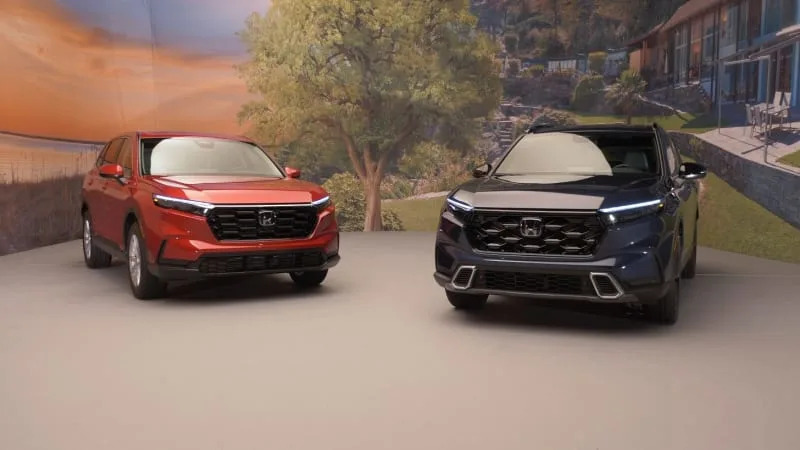
What are the CR-V safety ratings and driver assistance features?
Every 2025 CR-V comes standard with forward collision warning, automatic emergency braking, blind-spot and rear cross-traffic warning, lane-keeping assist and adaptive cruise control with lane-centering steering assist. These are substantially better systems than those of the previous-generation CR-V and are solid for the segment, but aren’t quite as well-executed as those of the Tucson and Sportage (especially the adaptive cruise control and steering assistance system).
The Insurance Institute for Highway Safety named the CR-V a 2024 Top Safety Pick. That despite getting a “Poor” rating in the IIHS’ updated Moderate overlap front crash test (rivals didn’t do well, either), plus a second-best “Acceptable” rating for its forward crash prevention system. We’re honestly not sure what to make of that, as it seems to mostly speak to the IIHS making its tests harder. The NHTSA gave it a five out of five-star overall crash rating, with four stars for frontal protection and five stars for side crash protection.







